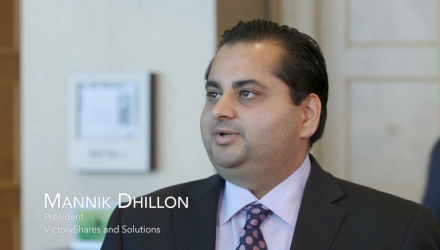In a prolonged bullish market, there is greater risk of pullbacks that could swiftly hit an investment portfolio. Consequently, investors may want to consider ETF strategies that may hedge against potential downside risks.
“You can’t expect what’s happened to always continue forever in the market, and that’s why some of the things that have occurred because of cap weighting and all the money going into these indices, like the concentration in certain sectors like technology, you would expect that at some point would have to unwind,” Mannik Dhillon, President VictoryShares and Solutions, said at the Inside ETFs 2018 conference. “So the longer the bull market runs and assets flow into the index or the market, it can reverse pretty quickly in the other way.”
As a way to help investors cope with potential market swings, VictoryShares has come out with its own suite of smart beta ETFs that focus on volatility-based weighting methodology to potentially help investors generate improved risk-adjusted returns.
For instance, the VictoryShares US 500 Enhanced Volatility Wtd ETF (CFO) and VictoryShares US EQ Income Enhanced Volatility Wtd ETF (CDC) start with the broad market and screens for companies with four quarters of positive earnings. Those stocks are then weighted based on their standard deviation over the past 180 trading days. Stocks with lower volatility are given higher weightings and stocks with greater volatility are given lower weightings. Ultimately, all securities that pass the earnings criteria are present, just at different weights.
A Smarter Way to Hedge Traditional Market Exposure
The ETFs shift from a long position to cash position depending on market swings to help investors better manage risk exposure. When the ETF is less than 100% allocated in stocks or bonds, assets are invested in cash or 30-day T-bills. The reallocation process is rules-based and determined based on month-end index values.
Looking at CFO, if on the last day of trading of the month the index declines 10% from its all-time high, the ETF will allocate to 75% cash and 25% stocks. If the index falls 20%, the ETF will hold 50% cash and 50% stocks. If the index falls 30%, it will hold 75% stocks and 25% cash. Lastly, if the index plunges 40%, it will hold 100% stocks.
For more ETF-related commentary from Tom Lydon and other industry experts, visit our video category.
